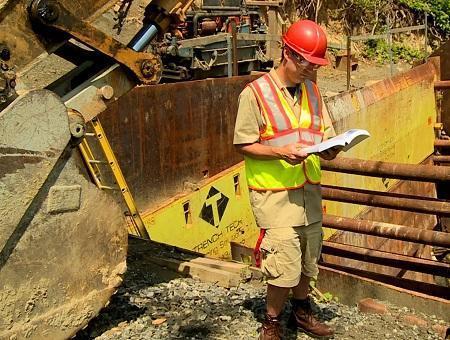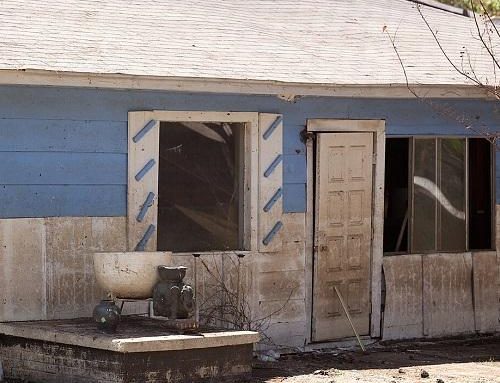Construction companies have a responsibility to ensure the safety of their employees and those working on the job site. However, with the constant movement and ever-changing conditions on a construction site, it can be challenging to maintain a safe work environment. That’s why developing a comprehensive safety program is crucial for construction companies.
Construction sites are inherently dangerous places, with many potential hazards that can cause serious injuries or even death. It’s essential for construction companies to have a comprehensive safety program in place to ensure the well-being of their employees and those working on the job site. According to the Occupational Safety and Health Administration (OSHA), implementing safety programs can reduce the risk of accidents and injuries by up to 40%. In this article, we will provide 10 tips for building an effective safety program for your construction company.
- Develop a safety culture: A strong safety culture is essential for any construction company. It starts with promoting safety as a core value, and involves encouraging employee participation in safety initiatives and holding regular safety meetings. This includes creating an environment where employees feel comfortable reporting hazards and near-misses without fear of retaliation. This can be achieved through regular communication, training, and recognizing employees for their contributions to safety.
- Conduct regular safety audits: Conducting regular safety audits can help identify potential hazards on the job site. This includes inspecting equipment, identifying fall hazards, and assessing the overall layout of the job site. This can also include regular walkthroughs of the job site, and conducting risk assessments to identify potential hazards and develop strategies to mitigate them. Audits are an excellent way to ensure that safety protocols are being followed and that the job site is in compliance with OSHA regulations.
- Provide training and education: Regular training and education on safety protocols and procedures is essential for construction companies. This includes training on the use of personal protective equipment, fall protection, and emergency procedures. This also includes providing ongoing training and education to employees to ensure they are aware of the latest safety regulations and best practices. Additionally, providing employees with the necessary training can help increase their level of safety awareness and reduce the risk of injuries on the job site.
- Encourage employee involvement: Encourage employee involvement in safety initiatives by allowing them to suggest safety improvements and recognizing their contributions to safety. This creates a sense of ownership and accountability for safety among employees. By giving employees a voice in the safety process, they become invested in the safety of the job site and are more likely to report hazards and near-misses.
- Implement safety protocols and procedures: Implementing safety protocols and procedures can help ensure that employees are aware of the risks and how to prevent them. This includes providing clear instructions on the use of equipment, providing proper personal protective equipment, and establishing emergency procedures. Additionally, this includes regularly reviewing and updating safety protocols to ensure they remain effective and relevant.
- Partner with safety experts: Partnering with safety experts can help construction companies stay up-to-date on the latest safety regulations and best practices. This can include consulting with safety experts, attending safety conferences, or participating in safety training programs. Additionally, this can include creating partnerships with other companies in the industry to share best practices and learn from each other.
- Invest in safety equipment: Investing in safety equipment can help reduce the risk of injuries on the job site. This includes fall protection equipment, hard hats, and personal protective equipment. Additionally, this can include investing in new technologies and equipment to improve safety on the job site.
- Establish a clear chain of command: Establishing a clear chain of command can help ensure that safety protocols are being followed and that employees know who to report hazards to. This includes having designated safety officers or managers responsible for monitoring and enforcing safety protocols. Additionally, this includes having a clear process for reporting hazards and near-misses, and taking action to address them.
- Create an incident reporting system: Having a system in place for reporting incidents and near-misses is crucial for any construction company. This includes not only encouraging employees to report incidents, but also investigating and analyzing them to identify root causes and implement corrective actions. Additionally, having an incident reporting system in place allows a company to track and measure its safety performance over time.
- Reward and recognize safety achievements: Rewarding and recognizing safety achievements is an important part of building a strong safety culture. This includes recognizing employees for their contributions to safety, and providing incentives for achieving safety goals. This can include bonuses, gift cards, or other forms of recognition. Additionally, recognizing and rewarding safety achievements sends a message to employees that safety is a priority and that their contributions to safety are valued.
Building an effective safety program for a construction company requires a combination of creating a safety culture, conducting regular safety audits, providing training and education, encouraging employee involvement, implementing safety protocols and procedures, regularly reviewing and updating safety protocols, partnering with safety experts, investing in safety equipment, establishing a clear chain of command, creating an incident reporting system, and rewarding and recognizing safety achievements. By following these tips, construction companies can create a safer working environment for their employees and reduce the risk of accidents and injuries on the job site.










